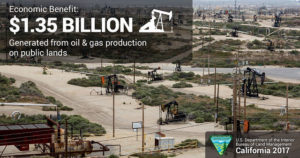by David Wojick, May 4, 2019 in WUWT
Climate alarmists often accuse skeptics, like myself and independent groups like the Committee For A Constructive Tomorrow and Heartland Institute, of being in the pay of Big Oil. This is completely false – the Big Lie repeated so often that people eventually believe it. We do not receive even a dime from Big Oil. It’s part of the green fairy tale that skepticism exists only because the oil companies are funding it.
For the record, none of us skeptics – climate realists – doubt or deny climate change. We all recognize that Earth’s climate is in nearly constant turmoil and fluctuation, locally, regionally or globally.
What we question is assertions that emissions from fossil fuel use have somehow replaced the sun and other powerful natural forces that have driven beneficial, benign, harmful or even hugely destructive climate changes throughout Earth and human history:
Changes such as at least five glacial periods that buried much of North America, Europe and Asia under mile-high rivers of ice, warm periods in between that melted those massive glaciers, Roman and Medieval Warm Periods, a Little Ice Age, the century-long Anasazi and Mayan droughts, the Dust Bowl, and countless other major and minor climate and weather changes.
The standard refrain is that ExxonMobil gave a cumulative few million dollars to various skeptical groups prior to 2007. But that was many years ago. They got scared off by alarmist pressure groups and haven’t given climate realists a dime since then. In fact, the situation today is completely the opposite.
Big Oil companies now give at least a billion dollars a year to climate alarmists, projects and lobbying, to drive the Manmade Climate Chaos narrative. Why would they do that? Two reasons come to mind.
…








